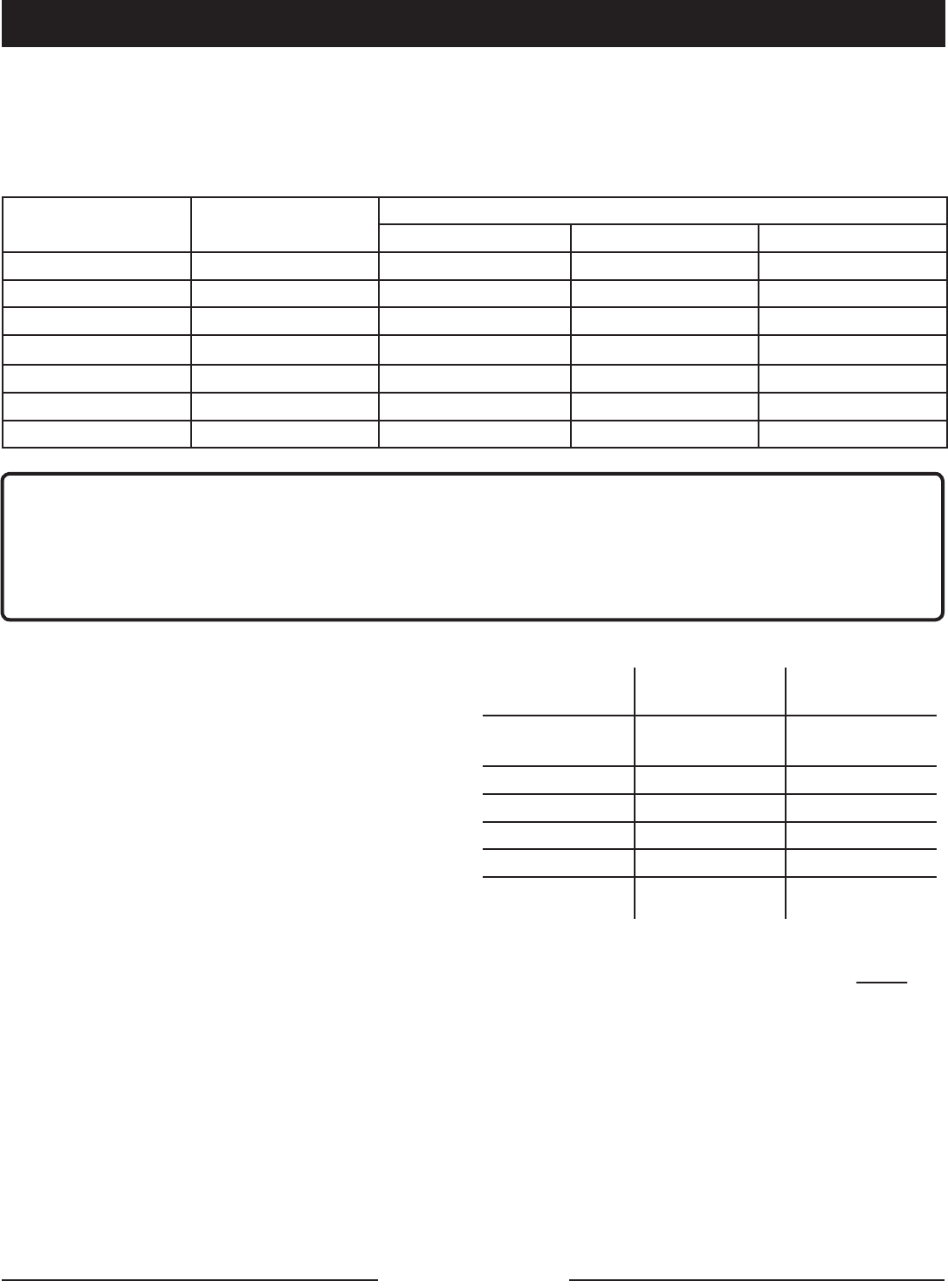
Page 8 — English
ELECTRIC MOTOR LOADS
It is characteristic of common electric motors in normal operation to draw up to six times their running current while start-
ing. This table may be used to estimate the watts required to start “Code G” electric motors; however, if an electric motor
fails to start or reach running speed, turn off the appliance or tool immediately to avoid equipment damage. Always check
the requirements of the tool or appliance being used compared to the rated output of the generator.
Motor Size (H.P.) Running Watts
Watts Required to Start Motor
Repulsion Induction Capacitor Split Phase
1/8 275 600 850 1200
1/6 275 600 850 2050
1/4 400 850 1050 2400
1/3 450 975 1350 2700
1/2 600 1300 1800 3600
3/4 850 1900 2600 —
1 1100 2500 3300 —
CAUTION
Operating voltage and frequency requirement of all electronic equipment should be checked prior to plugging them
into this generator. Damage may result if the equipment is not designed to operate within a +/- 10% voltage variation,
and +/- 3 hz frequency variation from the generator name plate ratings. To avoid damage, always have an additional
load plugged into the generator if solid state equipment (such as a television set) is used. A power line conditioner is
recommended for some solid state applications.
ELECTRICAL
GENERATOR CAPACITY
Make sure the generator can supply enough continuous (run-
ning) and surge (starting) watts for the items you will power
at the same time. Follow these simple steps.
1. Selecttheitemsyouwillpoweratthesametime.
2. Totalthecontinuous(running)wattsoftheseitems.This
is the amount of power the generator must produce to
keep the items running. See the wattage reference chart
at right.
3. Estimatehowmanysurge(starting)wattsyouwillneed.
Surge wattage is the short burst of power needed to start
electric motor-driven tools or appliances such as a circular
saw or refrigerator. Because not all motors start at the
same time, total surge watts can be estimated by adding
only the item(s) with the highest additional surge watts to
the total rated watts from step 2.
Example:
Tool or Appliance
Continuous
(Running) Watts
Surge
(Starting) Watts
Window AC,
10,000 BTU
1200 1800
Refrigerator 700 2200
1/3 HP Well Pump 1000 2000
27 in. Television 500 0
Light (75 Watts) 75 0
3475 Total
Running Watts
2200 Highest
Surge Watts
Total Continuous (Running) Watts 3475
Plus Highest Additional Surge Watts + 2200
Equals Total Generator Output Required 5675
